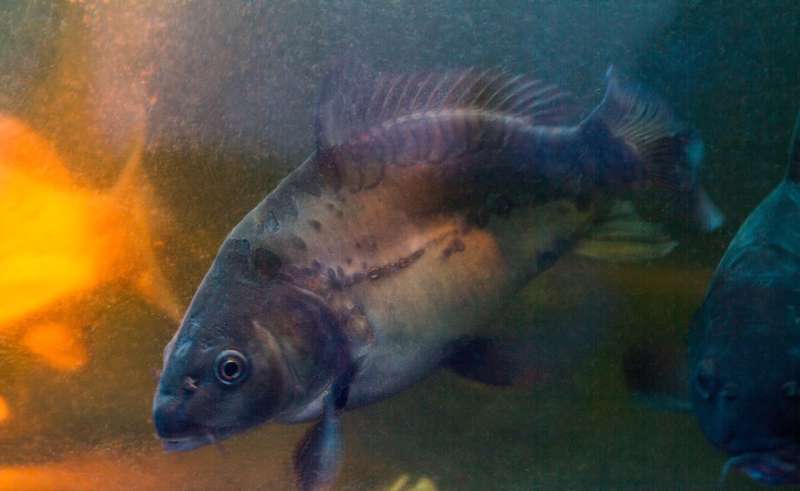Defying the koi herpes virus

Whether grilled, spicy with bell peppers or breaded in flour and fried floating in oil – the carp is one of the most popular edible fish. A dreaded threat to the up to 15 kilos fried fish: the koi herpes virus (KHV). It can be dormant in the carp for months before the most deadly KHV infection erupts – enough time to infect numerous other farmed fish. Together with three other partners, Fraunhofer researchers have now developed a process that will help diagnose the virus more reliably and accurately.
Around half of all fish today come from aquaculture, since the overfishing of the oceans has caused this market to grow steadily. For fishery yield, the health of the fish is crucial.
After the trout, the carp is the most important aquaculture fish in Germany. Large carp farms can be found in the Saxon Upper Lusatia area, although Franconia and the Upper Palatinate are also considered traditional carp regions with numerous smaller farms. For years, breeders across Germany have been fighting against the koi herpes virus that is continuing to spread and causing the notifiable KHV infection. During an outbreak of the disease in Saxony from 2003 to 2005, nearly all the animals died in some fish farms; 28 tons of carp were lost.
Improved diagnostics using cell cultures
"The KHV infection cannot be treated, so it is important to prevent it as far as possible. Together with our project partners, we have developed improved diagnostics with which infected animals can be identified reliably. The more quickly the sick carp are separated, the greater the chance is of protecting the other fish from KHV," says Dr. Sebastian Rakers, who heads the working group Aquatic Cell Technology and Aquaculture at the Fraunhofer Research Institution for Marine Biotechnology and Cell Technology EMB in Lübeck, Germany.
Previously, the koi herpes virus had been detected by PCR tests that made the pathogen DNA visible in a tissue sample. "If not enough virus DNA is present in the sample, though, you get false negative results with PCR."
Another significant disadvantage of the PCR tests: they do not allow a conclusion to be reached about how infectious the virus is, since the genomic evidence does not necessarily correspond with the detection of reproducible virus.
"With our improved and somewhat newly developed methods using cell cultures, we can determine how many virus particles are present per cell – therefore, also how strongly the virus is replicated in the cells." As a result, the cell cultures serve not only as an additional diagnostic tool, but also to understand the virus more thoroughly.
Vaccine development is well on its way
Rakers and his team have managed to grow cell cultures that can replicate significantly more viruses per cell than can traditional cultures. "So far, the best possible titer, which is the number of infectious viruses per milliliter that is needed to kill half of the cells, was 106. We have been able to increase the virus titer to 108, and through further optimization measures, we hope to reach a titer of 1010."
This is not only important for improved diagnostics; it is also a prerequisite for the development of a highly-effective vaccine against KHV. "Our project partners from the Friedrich Loeffler Institute (FLI), the Chair of Bioprocess Engineering at the Friedrich Alexander University of Erlangen-Nuremberg and the University of Veterinary Medicine Hanover are working intensively on vaccine development and have already been able to significantly reduce mortality in the Asian KHV line."
Provided by Fraunhofer-Gesellschaft


















